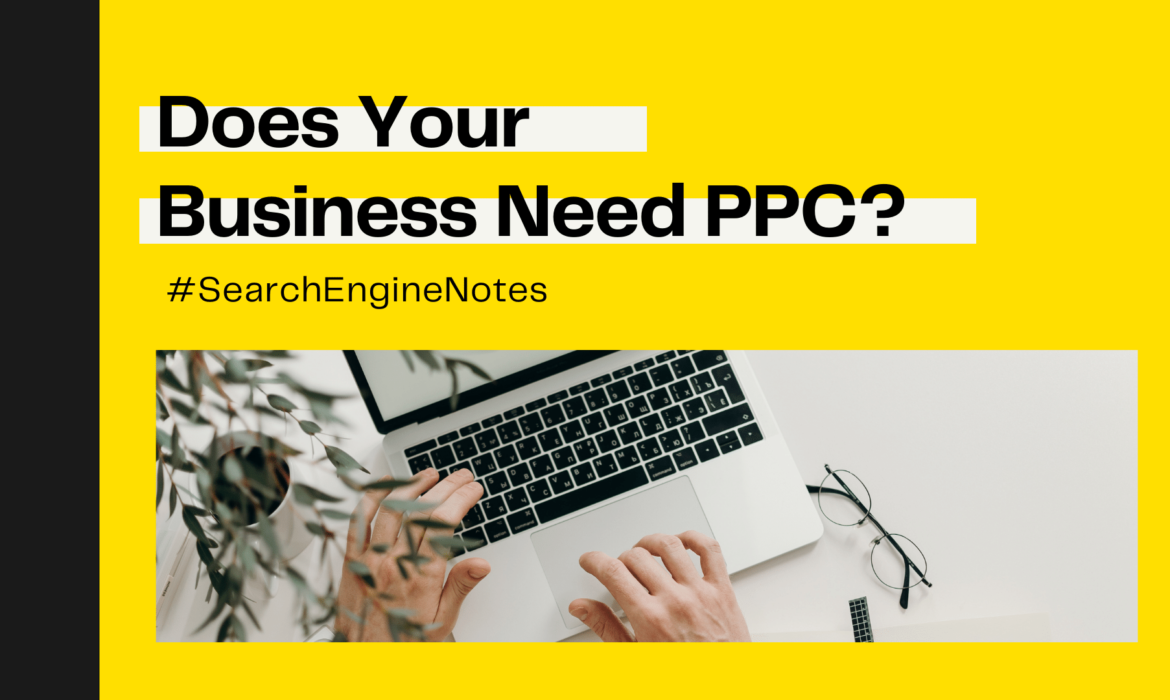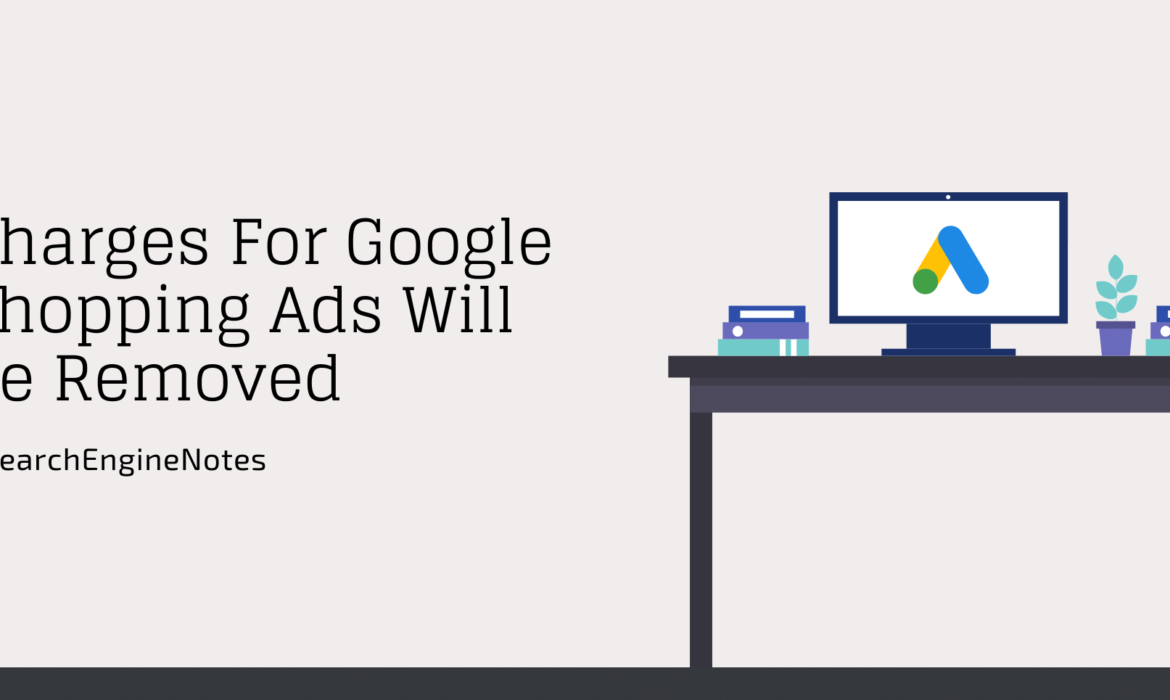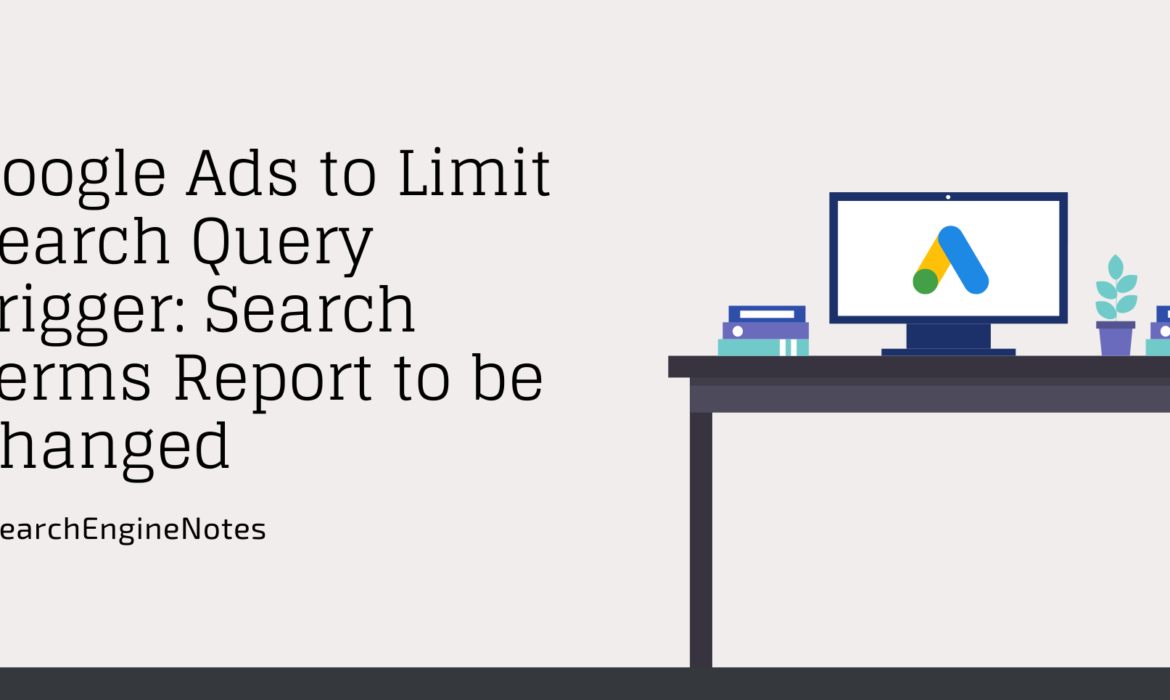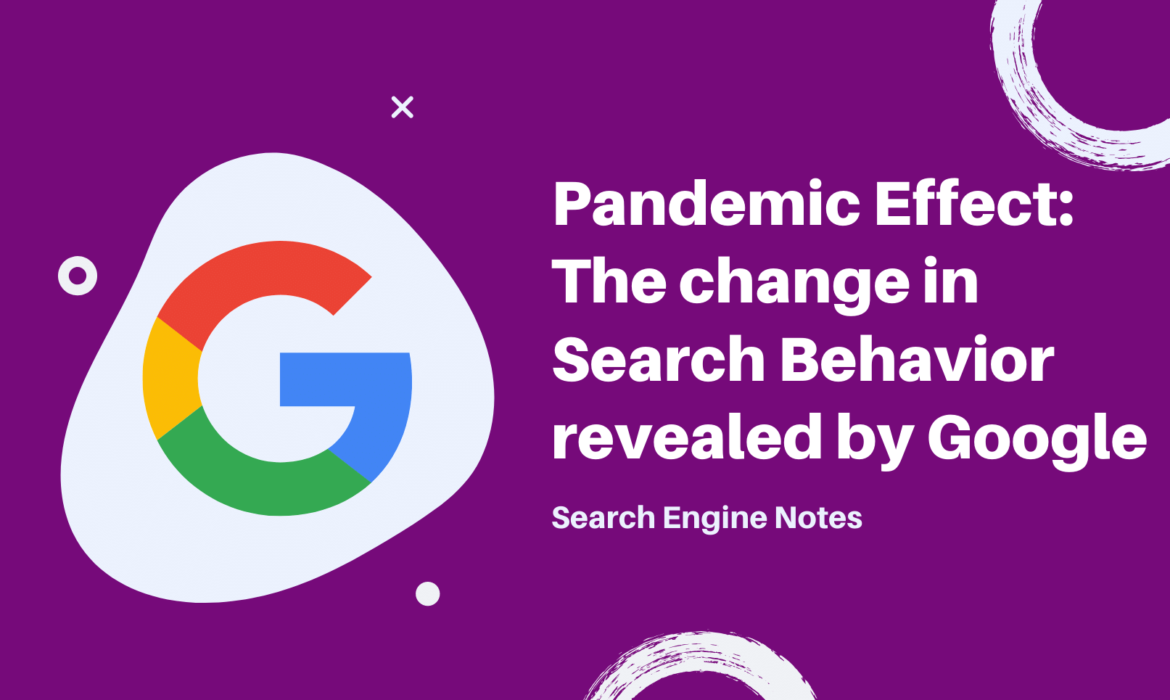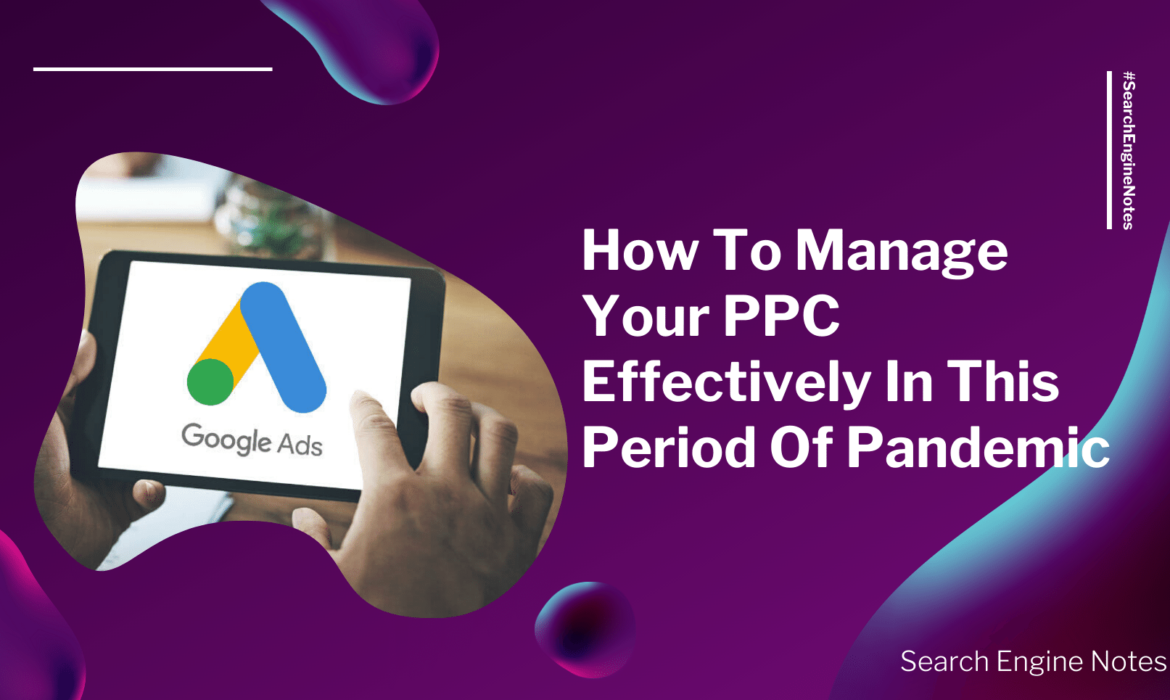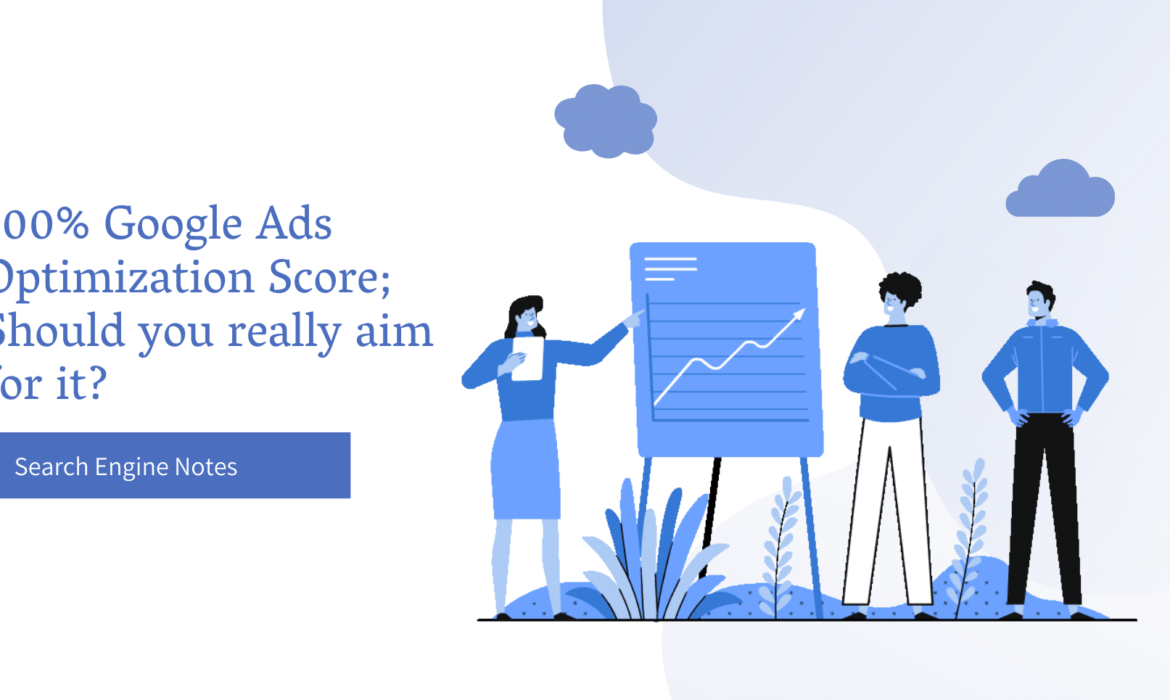Does Your Business Need PPC?
In this blog, we will try to define what PPC is and then touch on the important points as to why your business needs PPC irrespective of the industry or niche it belongs to. Chances are that you already know what PPC is but still we will get that out of the way to get rid of any confusion.
SO, what is PPC?
PPC stands for Pay-Per-Click advertising. No brownie points if you have guessed it already. It is a standard marketing model in which every time an ad is clicked the advertiser has to pay a certain amount. It is a shortcut to getting more website visits. Instead of working towards it organically by earning the visits, you are basically buying visits.
Say, you set up a PPC campaign for the keyword ‘latest footwear’ or maybe ‘trending’ or ‘trendy footwear’. Now each time a user places a search query for these words your Ad is highly likely to show up (depending on the bid you placed). We will assume that it does and for each click, the search engine will charge you $5. This might seem high at first but say one $5 visit resulted in a $500 sale. The profit margin is high and the return on investment is off the charts, right?
The formula for a fantastic PPC campaign comes from years of experience and experimenting. Focus on the following points to come up with a successful PPC advertising campaign:
- The relevance of Keyword – Having the right set of keywords list, keyword groups that are related to your niche, and compelling ad copies is the key.
- Landing Page – This is the page where the viewer is redirected to after clicking the ad. So you know how important this is. Clear call-to-actions, query-specific content, and persuasive visuals are the few basic points that need to be considered for creating a successful landing page.
- Creativity – Both the creative and the ad copy for your PPC campaign is crucial. Coming up with the right balance of both that churns out clicks is essential for the success of your campaign.
How can PPC marketing help your business?
The most important role of PPC marketing is it guarantees your company’s appearance at the top of the results page. SEO can help you to reach the top spot organically but it is a time taking method. PPC ensures instant results.
The sponsored ads are shown above organic results and this plays a vital role for mobile viewers. With the dearth of screen space, searchers are more likely to focus on the sponsored ads first.
Setting up a PPC campaign for seasoned veterans hardly takes an hour and if you have the funds required, PPC will ensure the best results for your investment.
PPC marketing is also popular because tracking results is much easier. You have the luxury to track every dollar spent on each ad set and keywords for each campaign. This allows you to determine your ROI in a much more accurate and efficient manner. Testing and experimenting with multiple campaigns also become much easier in this scenario.
PPC provides the ability to schedule your ads, set up location-specific ads, and the time for which these targeted ads will run. PPC also provides you access to each search engine’s affiliate network websites and products. PPC marketing can drive instant results for your business provided that you implement it properly.
If you have a small business and do not have the luxury to splurge on PPC marketing you can always opt for organic marketing. SEO and social media campaigns are the best organic marketing methods to drive results and they prove to be valuable assets for your business in the long run.
Charges for Google Shopping Ads Will be Removed
Earlier this year due to the pandemic, Google rolled out free shopping ads in the US. Since April, Google shopping listings have been free in America. Google has plans to extend this benefit to more countries over the world. Soon retailers across Europe, Asia, and Latin America will be able to run free Google Shopping listings.
The change will most likely start taking effect from mid-October. The financial and situational crisis, that hit many businesses, was the main reason behind this change. Many businesses have since moved online and more and more consumers have also started showing a rise in online shopping activity. This change will not only benefit retailers but also consumers who will now have the benefit of choice irrespective of the scale of business they are transacting with.
This change will provide an opportunity for many struggling businesses to resume operations and reconnect with their consumer base. Many businesses have a robust stock of items that people are searching for online but there is a huge gap because they do not have any online presence whatsoever.
Google saw a significant rise in the percentage of engagement between consumers and merchants after they rolled out free shopping listings in the US. Google wishes to expand this benefit beyond borders now so that retailers all over the world can take a sigh of relief.
Retailers who can afford to pay though can still do so. Google has left that option open. It is quite obvious to state that paid listings will benefit more than the free ones and will appear in ad slots above the free ones in the Shopping Tab. So it is still advantageous to pay for shopping listings on Google.
So, how will you run your free Google Shopping Ads?
- Create a Google Merchant Center Account or sign in if you already have one
- Click on Growth in the left navigation menu
- Go to Manage Programs
- Select Surface across Google
- Use Product Feed to add your products
- Follow through with the website verification process
- Confirm that the website belongs to you
- Click on Activate and you are all set
Stay tuned on our Facebook and LinkedIn pages as we will share the news when this goes live in India.
Google Ads to Limit Search Query Trigger: Search Terms Report to be Changed
Google issued the following statement: “In order to maintain our standards of privacy and strengthen our protections around user data, we have made changes to our Search Terms Report to only include terms that a significant number of users searched for.”
The effect of this change will primarily depend on how Google defines ‘significant’. This will surely affect the campaigns and budgets of many advertisers. The range of impact is yet to be ascertained. Currently we can see search terms with only one impression or click present in the search term reporting. This is a common sight but we can guess that this will not continue in the near future. All we can do now is wait and see how Google approaches the change to the search terms report.
We have to respect the fact that Google wants to protect user privacy but we also have to consider the impact once the data is withheld. The purpose is clear, Google wants to prevent misuse the access of personally identifiable information which users may have included in their search queries. It is also to prevent advertisers from exploiting query data to identify users.
Google already has a limit in terms of query data in their Search Console for this particular reason. A users’ query triggers ads and whenever a user clicks the advertiser has to pay for that. Now if this data is taken away, advertisers won’t know what we can’t see.
If the change is limited to only sensitive queries which trigger privacy issues then it is fine. Our main worry is that the statement has a different essence and there are thousands of low-volume queries with absolutely zero privacy risk. We hope Google will take the best course of action as far as this change is concerned.
The main challenge will be in the area of negative query management. Advertisers will have far less control over the queries that trigger their ads. Over the period of time advertisers have gradually shifted their focus a lot from positive keyword management to negative keyword management approach to their keyword optimization. Search terms reports play an important role nowadays because of this.
Limiting access to this data will create problems for advertisers. They will not be able to determine which queries should be added to the negative keyword lists to make their campaigns more efficient. A single low-volume keyword will not have much impact but in aggregate the costs will add up. Advertisers will not be able to understand which words or phrases are working and which ones are not.
Pandemic Effect: The Change In Search Behavior Revealed By Google
Google in their latest update revealed that the search behavior is changing during the COVID-19 pandemic. They have concluded based on their data on search trends the top 5 ways in which the search behavior is changing.
Google has revealed this data to assist marketers and brands in being more helpful towards their customers. Since no organization is immune to the effects of the changing consumer behavior we suggest that everyone should take note of these insights.
Google has classified their findings about the change in consumer search behaviors in the following 5 broad categories:
- Assembling critical information
- Discovering New Connections
- Adjusting to the changes in their routines
- Praising everyday heroes
- Taking care of themselves and others

A detailed outlook is provided below:
Assembling critical information
The rate of consumption of online content has increased exponentially due to the quarantine measures taken by governments worldwide. Consumers or the common mass needs this to get by and adapt to the recent changes in their life.
It is suggested that businesses and organizations should have a clear line of communication with their customers with respect to when, where and how can their customers get the things that they need.
Google has been explicit that search interest has spiked for the following topics:
- Retail
- “can you freeze” different types of food
- Home delivery
- Mortgage rate suspension
- Short term work employee
Google also offers these recommendations:
- Acknowledge the new reality.
- Give people credible, detailed, and current information about your operations. Reinforce that you’re there to help.
- Regularly update communications across your website, blogs, social handles, and Google My Business page.
- Be flexible. Help customers with cancellations, refunds, and customer service.
Connections & Relationships
As everyone has been forced to practice social distancing, they are eventually discovering new ways and methods to cope with this. Making virtual connections and strengthening connections within the household is becoming the main areas of focus.
Search interest has increased in the following topics:
- “With me” videos on YouTube
- “Study with me” videos up 54%year-over-year
- “Bulk cook with me” and“disinfect with me” are also trending right now
- Multiplayer video games
- Virtual happy hour
Google’s recommendations for helping consumers:
- Look for ways to connect your customers, locally and globally.
- Consider if your brand has a role to play in creating or enhancing shared experiences, virtually or otherwise.
Adjusting to Changes in Routines
A lot of people have started adapting their daily routines according to their new lifestyle at home. “Do it yourself”, “stationery bicycles” and “dumbbell sets” has picked up interest according to Google Trends. Interest in late-night talk shows has also increased due to the fact that the hosts have started recording videos from their homes. This helps the common mass in relating themselves with the hosts and coping with their new way of life and accepting it gradually.
Google’s recommendations for helping consumers as they adjust to new routines:
- Let people know that solutions are available whenever, wherever.
- Assess when people need you most, whether through your own first-party data (like site analytics or email opens) or Google Trends and adjust your communications strategy accordingly.
- Update or publish often. There’s a need for content that informs, entertains, connects, and promotes wellness.
Praising Everyday Heroes
Search interest for “thank essential workers” has increased lately due to the fact that many people are risking their own health to continue their jobs. Health care workers, cashiers, delivery personnel, and many other people are fall in this category, and they deserve a lot of respect and praise for doing so.
Google offers these recommendations for helping consumers with supporting everyday heroes:
- Look for people who are helping, and find ways to support or celebrate them.
- Consider who the heroes are among your employees, your customers, or even your local community.
- Consider whether you have nonhuman heroes that can contribute, like your technology, your operational rigor, or your equipment.
Taking Care of Themselves and Others
People are trying their best to attend to their physical and psychological needs of themselves as well as the ones around them. Search interest has increased lately for activities that can aid one in dealing with boredom, anxiety, and uncertainty. People are searching for more for topics like “relaxation” and “puzzles” as well as virtual tours.
Google offers these recommendations for helping people find new ways to enrich their lives:
- Facilitate virtual collaborations with outdoor spaces and the cultural institution’s people yearn to visit.
- Join the conversation about home-based health and well-being.
- Pivot to platforms and formats that make sense for people staying home.
Google concluded its report by emphasizing the fact that the usefulness of businesses now will be a major factor as to how they will survive in the long run.
84% of US consumers say that their loyalty depends on how the companies act during this period of crisis (according to a survey conducted in late March).
How To Manage Your PPC Effectively In This Period Of Pandemic
The marketing and advertising world has also come to a standstill with the spread of COVID-19. The recent outbreak created a massive impact on both the real and the digital world. The majority of businesses and firms have shut down all over the world. Many people are suffering from the drawbacks of this situation.
Freelancers and agencies have suffered huge losses and many businesses have pulled the plug on their advertising campaigns. It is time for advertisers to adapt to the situation and be more creative and understanding without losing their cool. We have put together a list of things which you can do to manage your PPC better in this period of time:
- Reiterate messaging and values to align with the current situation: Companies have to shift to promoting those products and services which have higher demand right now. The main trends that are hot in this hour are:
- Working from Home
- Social Distancing
- Family Time
- Essential and Medical Services
- Online tutoring or HomeSchooling
- Streaming services and VoDs
Ifyour product or service be can be associated with or can be modified to fit into one of these areas, shift into a temporary plan to promote these initiatives.
Businesses may also try and shift into virtual services or virtual consulting and provide online workshops or webinars.
All active campaigns must be reviewed and see if the messaging still fits the current environment, for example:
- Review CTAs like “Visit us in-store” and revise
- Display and social ads images which promote people in groups or touching
- Add outdoor pickup information
- Include detailed shipping information with benefits like free, fast, etc
- Hours of operation and any deviation from the normal services
- Your company’s response to the virus – a quote or messaging
Though it is fruitful to use some of these messaging in the primary ad copy, we also recommend that you shouldn’t forget to fully utilize Ad extensions such as site links and call-outs to convey the information.
Retaining a minimum brand presence is crucial and continue to feed the upper funnel because it may be harder to recover later after losing momentum. Though it is evident that the situation needs to be acknowledged and a softer sales approach is recommended.
- Change in Search Behavior: Though people are staying at home and maintaining social distancing they are more active online. They are still searching and researching their areas of interest, making purchase decisions and they continue to live their lives online for the time being. Communication about services that can be delivered virtually and delivery schedules for the same is very important. Ad copies orAd extensions communicating benefits like free delivery, door to door pick-up, contactless drop-off, etc. should be used.
- Negative Keywords: You are likely to see major or minor shifts in search queries triggering your Ads irrespective of the industry. The following approaches are feasible:
- Review all search terms and display campaign placements in real-time for keywords and content related to COVID-19
- Try and predict searches that may trigger your ads and create a consolidated negative keyword lists that can be shared among all campaigns and easily updated
Try and excludes keywords related to COVID-19 like:
- Corona
- COVID
- Coronavirus
- SARS
- Virus
- Wuhan
- Epidemic
- Pandemic
Google trends are the best tool which can provide you with the latest information on search behavior
- Revise Budgets and spending: Take a look at your budget vs. spend and shift it towards products or services that have more popularity and relevance now.
Depending on the platform, instead of setting up daily budgets try experimenting with monthly or lifetime budgets. This will save a lot of valuable time for other important account management tasks. It is advisable to really focus on improvising and finding a balance between multiple campaigns so that you can identify gaps and allocate budgets that have not been utilized throughout the year and apply it to the important ones.
- Focus on the right channels: With the current lockdown and #stayhome trending people are spending most of their leisure time on social media. People are engaging more with content like news and videos.
Facebook and WhatsApp have reported an increase in usage of their messaging, voice, and video calling services.
As mentioned earlier, many businesses have stopped or rather paused their marketing initiatives. This means there is an opportunity for advertisers because they will now face less competition and increase market share easily without making any changes to their current budgets. This is the moment to reach and connect with people at the top of the funnel through PPC and paid ads on social media.
Some opportunities worth mentioning are given below:
- In-video ads and YouTube Ads
- Pinterest for those groups who are discovering new products for purchase
- Expansion of display ads on the Google Display Network and Microsoft Audience Network
- Twitter is also a great option but there are repercussions with brand reputation issues arising from negative feedback and activities
100% Google Ads Optimization Score; Should You Really Aim For It?
For those of you who do not have any idea about this let me tell you that Google Ads has its own built-in feature that provides the users with an optimization score and further recommendations on how they can improve it. We decided to test this in order to procure actual results and find out if we should all be actually aiming for a 100 or not unlike our school days when the answer was so obvious.
The optimization score, according to Google is an estimate of how well a Google Ads account can perform. The optimization scores are available at the campaign, account, and manager account levels. It is shown for all active Search, Shopping, and Display campaigns.
Since its launch, Google has continued to update this feature and has also added recommendations that will improve your score. You may also find an ‘apply’ button beside most recommendations. This helps to automatically apply the respective recommendations to your account.
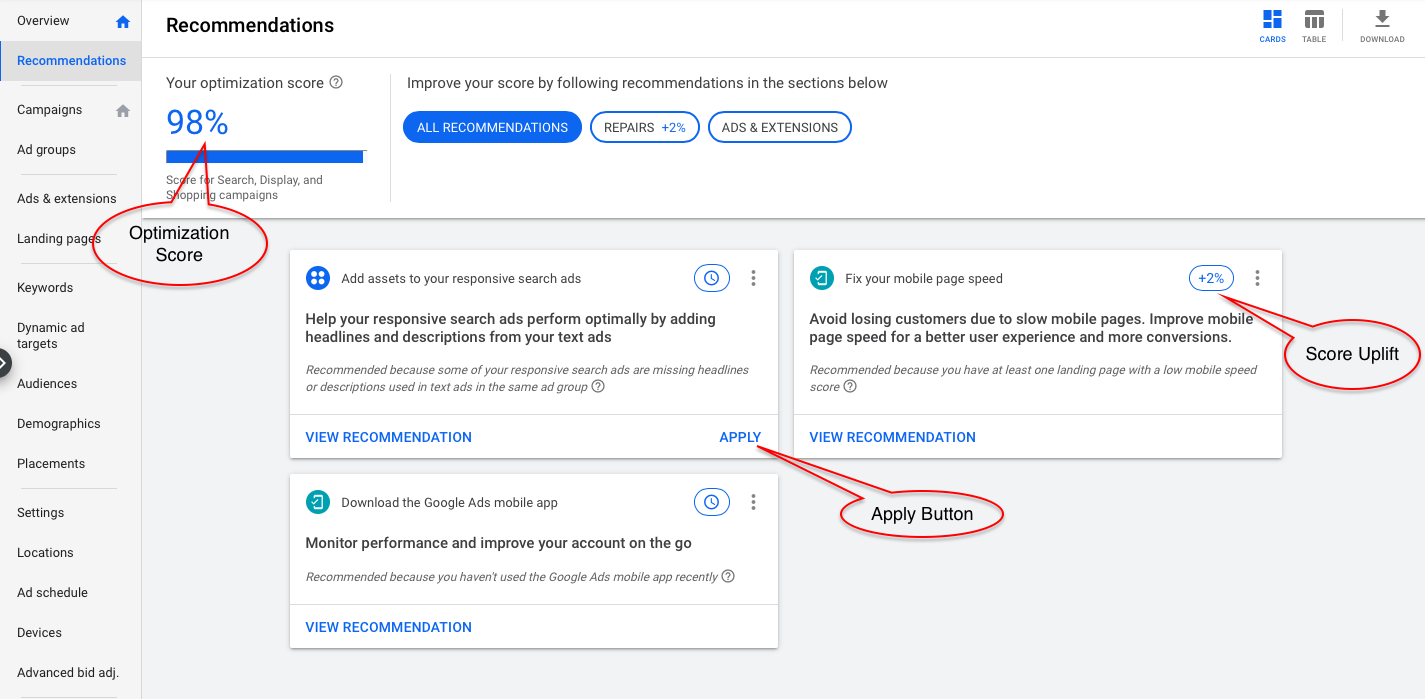
We tested out the recommendation feature with dummy brands selling myriad products and services. Following are the recommendations that we got:
- Use Customer Lists: This was a great recommendation. Customer Lists can help in retargeting. It also helps in analyzing and finding out similar audiences. Then again this recommendation has limited practicality for other business types where customer lists will not add any value overall.
- Add Price Extensions: This was an interesting suggestion. Price extensions are generally used by retail stores. Thus it is again subject to the nature of the business. Also revealing the price of a product or service is not a welcome sight for many businesses ina highly competitive landscape. You can always add prices and test if its working towards qualifying your traffic in a better way or not.
- Apply automated bidding: This was a real downer. We have a very bitter experience to say the least with this feature. Once we decided to turn on automated bidding for 5 out of 60 campaigns for a particular client of ours. Guess what? Within a week we could see a rise in spending of approximately 57%!! We decided to immediately shut it down. Automated bidding has always been a feature that has disrupted our client’s budget. The cost of scoring 100% is too much in this case.
So, let’s address the elephant in the room now. Should you be aiming for a 100%optimization score in Google Ads?
The answer is a definite, NO.
I would rather say that this score is not an important goal. Most of our clients’ accounts have an average score of 85%, which has always been a sweet spot in our case. Pushing higher is not really a problem but we do not want to blow a hole in the advertising budget. There’s an optimum point for everything and it’s safe to say that you should test and arrive at your own point. We are not saying that Google’s optimization score is entirely rubbish. Before trusting it entirely you should test it for yourself.
Google’s AI might be smart but it can not decipher your business goals and decisions for you. Thus it is safe to conclude that the human factor is still relevant in the year 2020.

